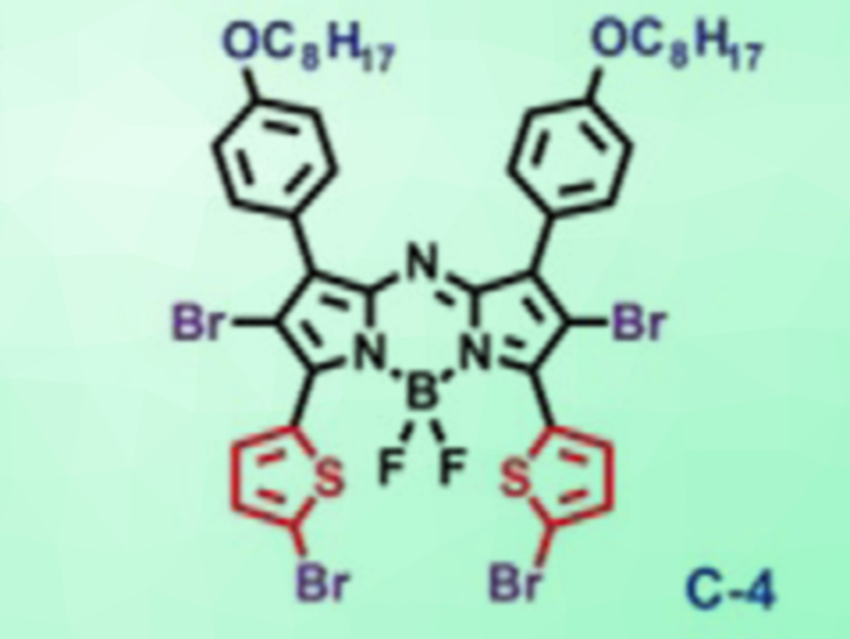Photoinduced therapy is a useful cancer treatment because of its non-invasiveness. Phototherapeutic agents (PTAs) are light-sensitive substances that accumulate in tumor cells. Upon irradiation with light, they form reactive species that can kill the cells.
Qiang Zhao, Shujuan Liu, Nanjing University, China, Wei Huang, Nanjing University and Northwestern Polytechnical University, Xi’an, China, and colleagues have developed organic PTAs that are derived from aza-boron-dipyrromethene (aza-BODIPY). To identify suitable substituents for the aza-BODIPY core structure, they used calculations of the compounds’ energy levels. The team optimized donor–acceptor groups, the number of heavy atoms, and their functional positions in the compounds. This led to the structure C-4 (pictured), which was synthesized along with three other derivatives for comparison.
The researchers found good photophysical properties for C-4. In-vivo tests showed that nanoparticles of C-4 accumulated efficiently in tumor regions in mice and killed tumor cells after irradiation with light. Overall, the study shows how rational design principles can be used for the development of PTAs with the potential for clinical application.
- Rational Design of Efficient Organic Phototherapeutic Agents via Perturbation Theory for Enhancing Anticancer Therapeutics,
Yunjian Xu, Menglong Zhao, Licai Wu, Feiyang Li, Mingdang Li, Mingjuan Xie, Shujuan Liu, Wei Huang, Qiang Zhao,
ChemMedChem 2019, 14, 1378–1383.
https://doi.org/10.1002/cmdc.201900302




